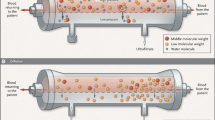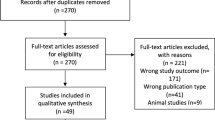Abstract
Background
Current guidelines for initiation of kidney replacement do not include specific recommendations for prescription parameters and monitoring.
Case outline
A 16-year-old girl presented with kidney failure with creatinine of 19.8 mg/dL and BUN of 211 mg/dL. She initiated continuous kidney replacement therapy (CKRT) with clearance of 1,300 mL/min/1.73 m2 which was increased to 1,950 mL/min/1.73 m2 at 17 h of stable therapy.
Complications
At 31 h of therapy, she developed generalized seizure activity. CT imaging was negative for acute intracranial process, and EEG demonstrated diffuse encephalopathy. CKRT was discontinued, and BUN was noted to be 47 mg/dL at that time (a 79% reduction from presenting BUN).
Key management points
• The potential for development of DDS is not isolated to intermittent hemodialysis and may occur later in presentation.
• A decreased clearance rate should be considered in those with risk factors for development of dialysis disequilibrium syndrome (DDS).
• Frequent monitoring of BUN/serum osmolality is important to allow for adjustment of the KRT prescription following initiation of therapy.
• Additional research is needed to guide risk assessment for DDS and therapeutic timing and goals in the early stages of KRT initiation.
• Inclusion of more specific guidelines surrounding DDS would assist in providing important support for nephrologists.
List of relevant guidelines
KDIGO clinical practice guideline for acute kidney injury [1]
Clinical Practice Guideline for the Evaluation and Management of Chronic Kidney Disease [2]
The Renal Association Clinical Practice Guideline Acute Kidney Injury (AKI) [3]
The Japanese Clinical Practice Guideline for Acute Kidney Injury [4]


Similar content being viewed by others
References
Kellum JA, Lameire N, Aspelin P, Barsoum RS, Burdmann EA, Goldstein SL, Herzog CA, Joannidis M, Kribben A, Levey AS, MacLeod AM, Mehta RL, Murray PT, Naicker S, Opal SM, Schaefer F, Schetz M, Uchino S (2012) Kidney disease: improving global outcomes (KDIGO) acute kidney injury work group. KDIGO clinical practice guideline for acute kidney injury. Kidney Int Suppl 2:1–138. https://doi.org/10.1038/kisup.2012.1
Levin A, Stevens PE, Bilous RW, Coresh J, De Francisco ALM, De Jong PE, Griffith KE, Hemmelgarn BR, Iseki K, Lamb EJ, Levey AS, Riella MC, Shlipak MG, Wang H, White CT, Winearls CG (2013) Kidney disease: improving global outcomes (KDIGO) CKD work group. KDIGO 2012 clinical practice guideline for the evaluation and management of chronic kidney disease. Kidney Int Suppl 3:1–150. https://doi.org/10.1038/kisup.2012.73
Chan CT, Blankestijn PJ, Dember LM, Gallieni M, Harris DCH, Lok CE, Mehrotra R, Stevens PE, Wang AYM, Cheung M, Wheeler DC, Winkelmayer WC, Pollock CA, Abu-Alfa AK, Bargman JM, Bleyer AJ, Brown EA, Davenport A, Davies SJ, Finkelstein FO, Flythe JE, Goffin E, Golper TA, Gómez R, Hamano T, Hecking M, Heimbürger O, Hole B, Hothi DK, Ikizler TA, Isaka Y, Iseki K, Jha V, Kawanishi H, Kerr PG, Komenda P, Kovesdy CP, Lacson E, Laville M, Lee JP, Lerma EV, Levin NW, Lichodziejewska-Niemierko M, Liew A, Lindley E, Lockridge RS, Madero M, Massy ZA, McCann L, Meyer KB, Morton RL, Nadeau-Fredette AC, Okada H, Perez J, Perl J, Polkinghorne KR, Riella MC, Robinson BM, Rocco MV, Rosansky SJ, Rotmans JI, Fernanda Slon Roblero M, Tangri N, Tonelli M, Tong A, Tsukamoto Y, Tungsanga K, Vachharajani TJ, van Loon I, Watnick S, Weiner DE, Wilkie M, Zakharova E (2019) Dialysis initiation, modality choice, access, and prescription: conclusions from a Kidney Disease: Improving Global Outcomes (KDIGO) Controversies Conference. Kidney Int 96:37–47. https://doi.org/10.1016/j.kint.2019.01.017
Glenn CM, Astley SJ, Watkins SL (1992) Dialysis-associated seizures in children and adolescents. Pediatr Nephrol 6:182–186. https://doi.org/10.1007/BF00866310
Tuchman S, Khademian ZP, Mistry K (2013) Dialysis disequilibrium syndrome occurring during continuous renal replacement therapy. Clin Kidney J 6:526–529. https://doi.org/10.1093/ckj/sft087
Osgood M, Compton R, Carandang R, Hall W, Kershaw G, Muehlschlegel S (2015) Rapid unexpected brain herniation in association with renal replacement therapy in acute brain injury: caution in the neurocritical care unit. Neurocrit Care 22:176–183. https://doi.org/10.1007/s12028-014-0064-y
Mistry K (2019) Dialysis disequilibrium syndrome prevention and management. Int J Nephrol Renovasc Dis 12:69–77. https://doi.org/10.2147/IJNRD.S165925
Kanagasundaram S, Ashley C, Bhojani S, Caldwell A, Ellam T, Kaur A, Milford D, Mulgrew C, Ostermann M, Ivanov DD trans., Kuchma I trans (2019) The Renal Association Clinical Practice Guideline Acute Kidney Injury (AKI), August 2019. KIDNEYS 8:217–224. https://doi.org/10.22141/2307-1257.8.4.2019.185121
Doi K, Nishida O, Shigematsu T, Sadahiro T, Itami N, Iseki K, Yuzawa Y, Okada H, Koya D, Kiyomoto H, Shibagaki Y, Matsuda K, Kato A, Hayashi T, Ogawa T, Tsukamoto T, Noiri E, Negi S, Kamei K, Kitayama H, Kashihara N, Moriyama T, Terada Y (2018) The Japanese clinical practice guideline for acute kidney injury 2016. Springer, Singapore
James M, Bouchard J, Ho J, Klarenbach S, Lafrance JP, Rigatto C, Wald R, Zappitelli M, Pannu N (2013) Canadian society of nephrology commentary on the 2012 Kdigo clinical practice guideline for acute kidney injury. Am J Kidney Dis 61:673–685. https://doi.org/10.1053/j.ajkd.2013.02.350
Palevsky PM, Liu KD, Brophy PD, Chawla LS, Parikh CR, Thakar CV, Tolwani AJ, Waikar SS, Weisbord SD (2013) KDOQI US commentary on the 2012 KDIGO clinical practice guideline for acute kidney injury. Am J Kidney Dis 61:649–672. https://doi.org/10.1053/j.ajkd.2013.02.349
Jörres A, John S, Lewington A, Ter Wee PM, Vanholder R, Van Biesen W, Tattersall J (2013) A European Renal Best Practice (ERBP) position statement on the Kidney Disease Improving Global Outcomes (KDIGO) clinical practice guidelines on acute kidney injury: part 2: renal replacement therapy. Nephrol Dial Transplant 28:2940–2945. https://doi.org/10.1093/ndt/gft297
McBryde KD, Bunchman TE, Kudelka TL, Pasko DA, Brophy PD (2005) Hyperosmolar solutions in continuous renal replacement therapy for hyperosmolar acute renal failure: a preliminary report. Pediatr Crit Care Med 6:220–225. https://doi.org/10.1097/01.PCC.0000154954.24129.F7
Rodrigo F, Shideman J, McHugh R, Buselmeier T, Kjellstrand C (1977) Osmolality changes during hemodialysis. Natural history, clinical correlations, and influence of dialysate glucose and intravenous mannitol. Ann Intern Med 86:554–561. https://doi.org/10.7326/0003-4819-86-5-554
Author information
Authors and Affiliations
Corresponding author
Ethics declarations
Competing interests
The authors declare no competing interests.
Additional information
Publisher’s note
Springer Nature remains neutral with regard to jurisdictional claims in published maps and institutional affiliations.
Rights and permissions
About this article
Cite this article
Stahl, J.L., Whelan, R.S. & Symons, J.M. Dialysis disequilibrium on CKRT: avoiding the steep slippery slope. Pediatr Nephrol 36, 2697–2702 (2021). https://doi.org/10.1007/s00467-021-05026-7
Received:
Revised:
Accepted:
Published:
Issue Date:
DOI: https://doi.org/10.1007/s00467-021-05026-7




